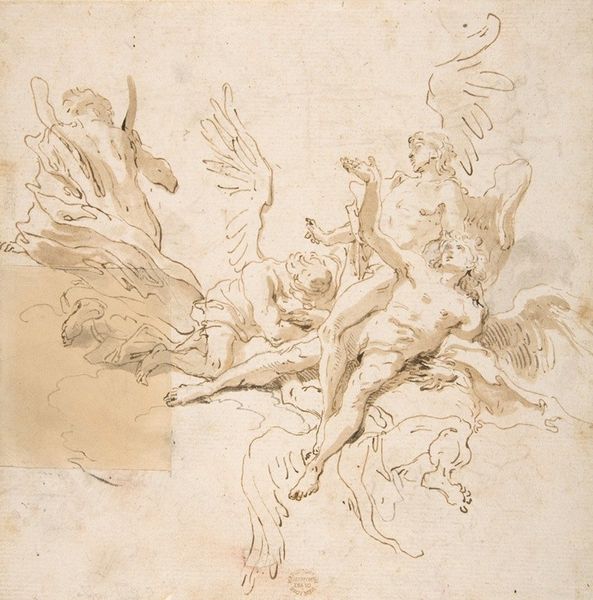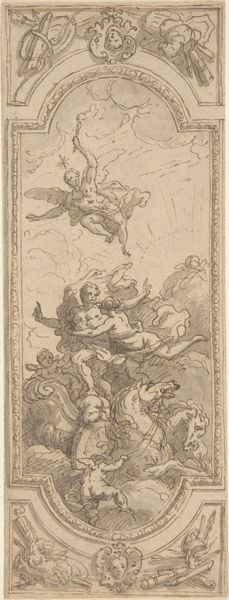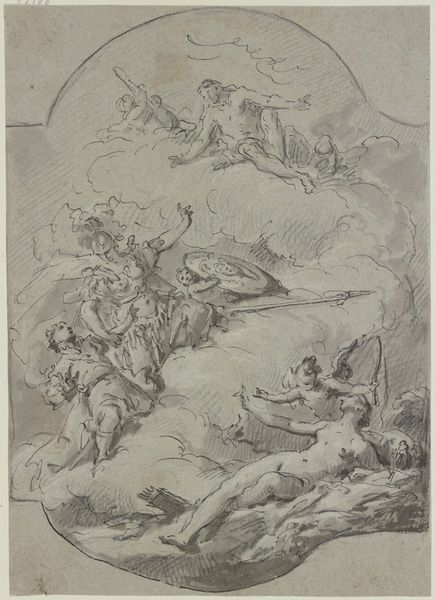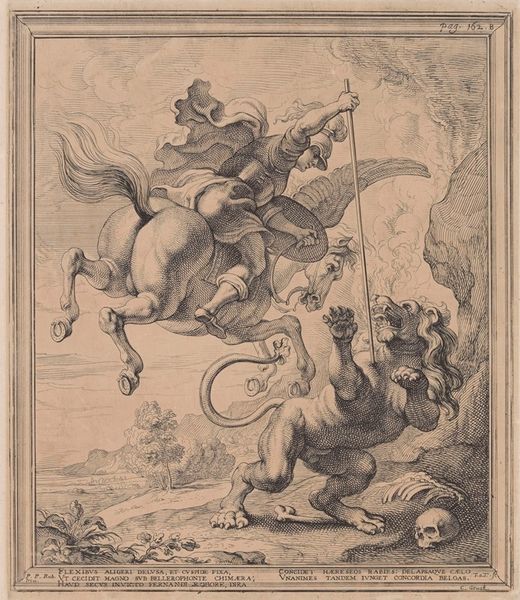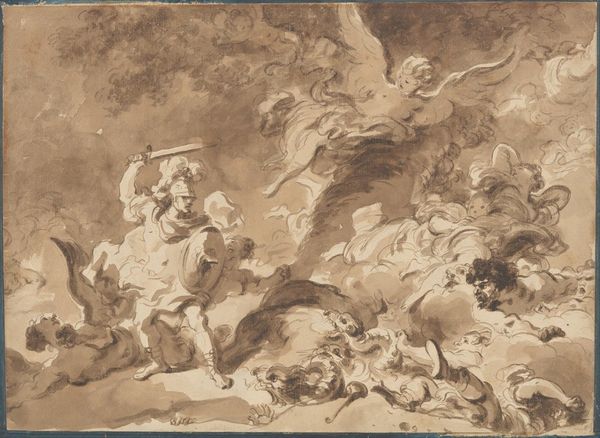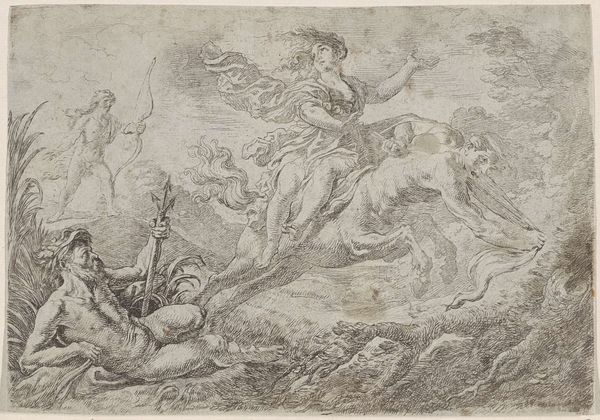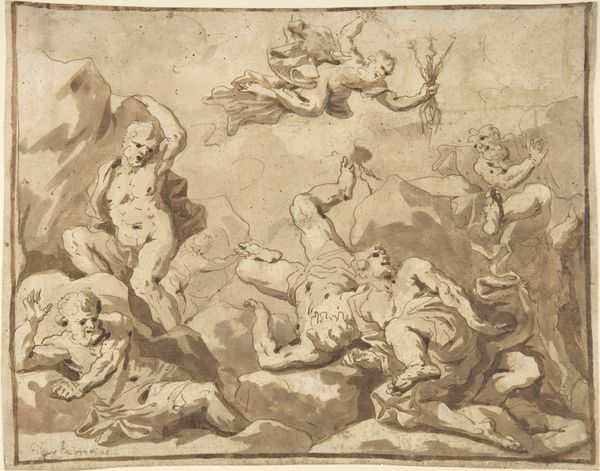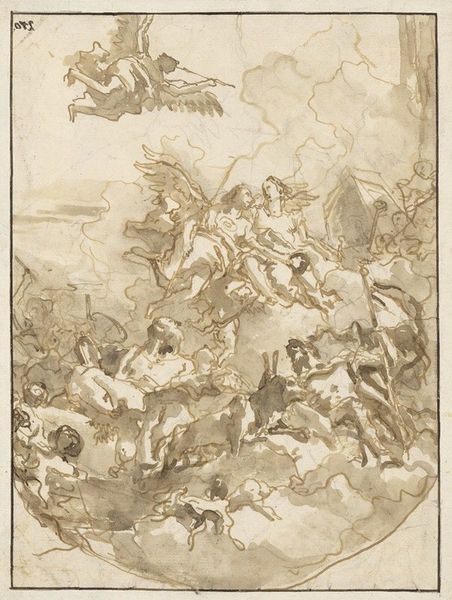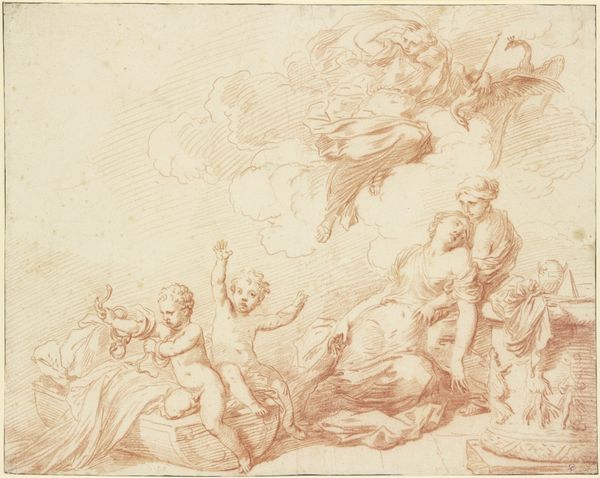
drawing, ink
#
drawing
#
baroque
#
ink painting
#
figuration
#
ink
#
history-painting
Copyright: Public Domain: Artvee
Curator: Immediately I get the sensation of free fall, as if everyone in this image were suspended within the currents of a turbulent dream. Editor: Let's orient ourselves. What we're looking at is a drawing titled "Study for the Fall of Simon Magus, S. Paolo Maggiore, Naples, 1690" by Francesco Solimena. It’s rendered in ink. Curator: Ah, the fall of Simon Magus! Magic versus faith—it's a powerful theme and brilliantly chaotic. The looseness of the lines almost makes the bodies dissolve into the swirling clouds. And the angel at the top feels… surprisingly detached from the mayhem. Editor: This piece really highlights Solimena's facility with line and his exploration of Baroque dynamism. Ink as a medium allows for incredible nuance in terms of value and depth and Solimena’s process appears to privilege this, but let’s not ignore the economic realities of artwork that informed its creation. This was likely made to prepare for a larger commission. Curator: Absolutely! A study, a step toward something grander. I imagine Solimena in his studio, experimenting with these figures, maybe fueled by a divine frenzy—or just lots of coffee! There's a raw energy here that feels immediate. Is this drawing an example of high art? Or craft? Or both? Editor: That's a central tension. It invites us to consider the relationship between labor, production, and artistic genius, all deeply embedded in the historical and social context of late 17th century Naples. The materiality of the ink, the support – the very accessibility of drawing in comparison to large scale fresco painting – shapes its meaning. What we often deem “genius” emerges out of an established network of consumption and creation. Curator: Thinking about it this way enriches the work even more. Beyond the visual spectacle, the piece now vibrates with complex human processes. I can almost feel Solimena's hand moving across the page. Editor: Indeed. Thinking critically about works like these, with open eyes and hearts, not only offers unique access points into the history of art, but challenges hierarchies within art as well. Curator: I think I will always see "Study for the Fall of Simon Magus" in a new, much more intimate way, with the focus less on art history and more on human hands. Thanks!
Comments
No comments
Be the first to comment and join the conversation on the ultimate creative platform.
